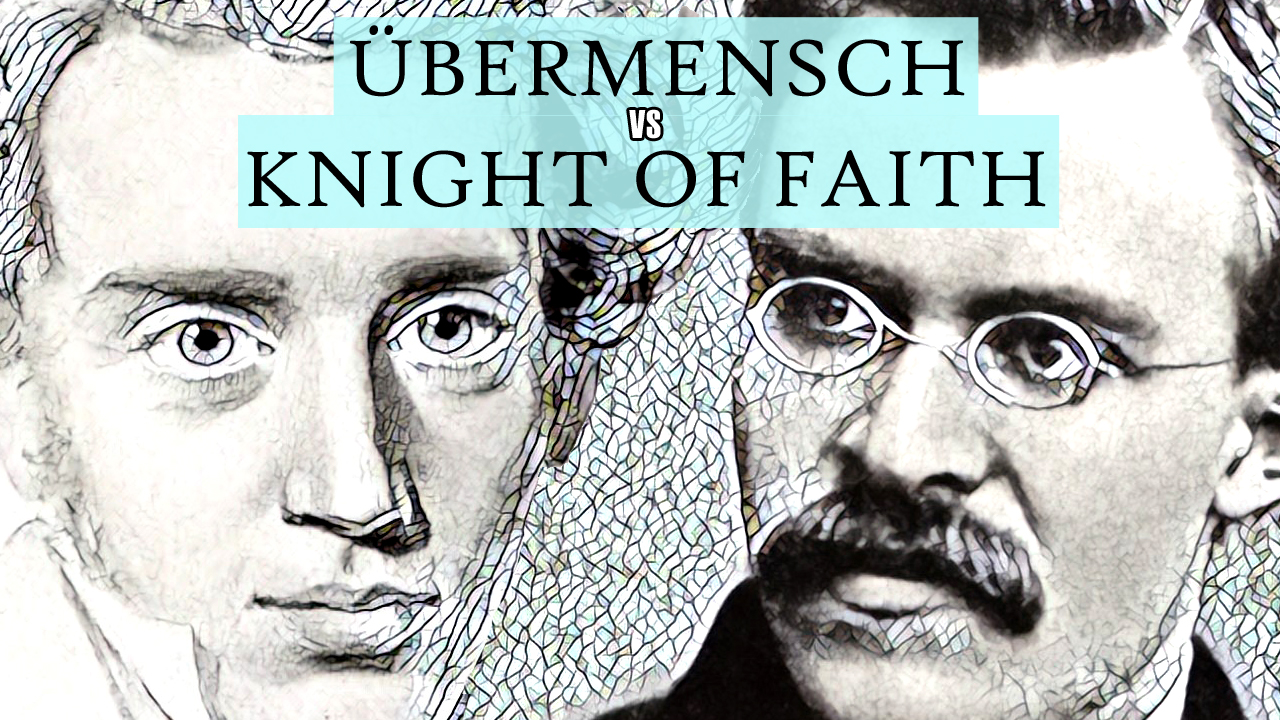Is there any relationship between the Ubermensch and the Night of Faith?
This is a question I got asked on my website thoughtsonthinking.org and is something I have never thought about which is kind of surprising seeing all the work I have done on these two philosophers for the channel, but, after sketching out some ideas I am here to argue that these two ideas are pretty much identical to each other, I don’t want to make this video to long so I will keep it relatively short.
The fundamental questions behind these two concepts of human condition are these:
– how should we live?
– how do we synthesis the self?
– how do we deal with despair and meaning?
The main way I came to the conclusion of why these two ideas are close to or are identical is by comparing Kierkegaard’s knight of faith with Nietzsche’s story of the three metamorphoses.
the final metamorphoses in Nietzsche’s story from thus spoke Zarathustra is: the child, the reason why he chooses the child is because the child is the near perfect analogy of how the Ubermensch or overman lives, what needs to be made important is that the Ubermensch is NOT a state of being but a process of becoming, it is never a state which you can be but the child represents the process in how the Ubermensch lives.
“Creation” // “Innocence” // “Oblivion” // “Play” & “Own World” these are the key, definitive words which Nietzsche uses to explain the world of the child but these words can also be the symmetrical yet alternative definitions of the Ubermensch.
Kierkegaard uses ballet as an example of the knight of faith, leaping into the infinite and coming back to finitude, thus, creation and innocence, whereby a snapshot of a leap is a demonstration of their own world of play, innocence and creation, this is no different from a child playing within it’s own world whereby the play itself is a performance resting between finitude and infinitude, the toy plane for example is of finite matter but the imagination of what at plane can do manifests in the complete potentiality of infinitude, therefore, the two existences of reality merge in complete harmony, compensating each other whenever need be.
Just as the child creates its own values so does the ubermensch but so does the knight of faith, the knight of faith is beyond and past the aesthetic and ethical stages of life, society screams “thou shalt” but both shalt not:
“The Child is innocent and oblivion, a new beginning, a play, a self rolling wheel, a primal motion, an holy yea-saying. Ay, for the play of creation, my brethren, there needeth an holy yea-saying: its own will the spirit now willeth; he that was lost to the world gaineth his own world”
using the spirit as will does the man who is lost in the world gain his own, that sounds very similar to the knight of faith for the only reason why one becomes in such a state is by continuously being lost in the world: through irony of despair which is the sickness unto death, faith is the acknowledgment that existence is a paradox. The definition of being “religious” is not the same for kierkegaard as it is for nietzsche but I would think that Nietzsche is “religious” for mankind as he devotes himself to man’s ability to overcome through power and spirit.
Kierkegaard talks about a teleological suspension of the ethical to become a knight of faith which again to me is also another identical comparison to the ubermensch as that is the only possible way if one is to create their own values.
Ultimately the main answer that kierkegaard brings to the table is that the only way to be a self is to consciously synthesis the self within finitude and infinitude, while the knight of faith is kierkegaard’s answer the ubermensch is nietzsche answer as well, in the three metamorphoses story given as an example the child IS essentially in that moment a self that has become integrated within finitude and infinitude to live in the perfect equilibrium which the lion and the camel have failed to do, therefore, the child in this philosophical story IS supposed to be an analogous representation of the living process of the ubermensch.
To make even further comparison you could say that the camel in the three metamorphoses is also the ethical stage in Kierkegaard’s idea of the three stages of existence.
it’s interest to see how these two philosophers who never knew of each others works come to the same conclusion but from different perspectives, it kind of shows that there is always a collective movement in thought or action occuring in the ether of a certain time, history and presence that is, in a sense, inevitable.
I personally view these perspectives like this: the Knight of Faith is the finality of a realisation and the Ubermensch is the process and action with which you carry yourself.


Nice! Liked very much
LikeLike
The child represents an innocence of spirit, a feminine naivete which has an essence of power because it exudes unbridled freedom. That which derives from nature has a spirit of freedom because it is not strapped down by the masculine domains of order, I.e, reason, ideology, truth. This is where Nietzsche’s “untruth” or “irrationalism” comes from, this return to nature in the form of Will to Power.
LikeLike
Nice work, keep it on Sir.
LikeLike
I am glad to be a visitor of this unadulterated website! , appreciate it for this rare info ! .
LikeLike